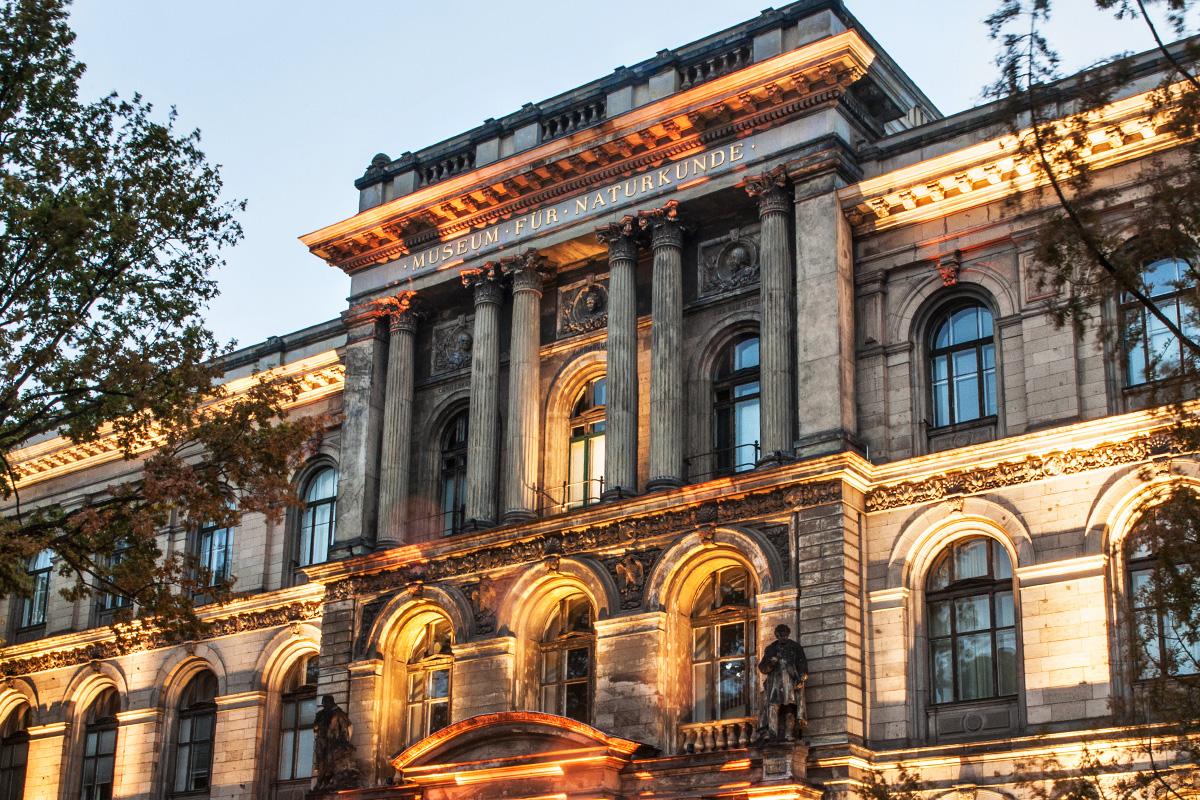11 October 2019
Over the next ten years, the Museum für Naturkunde Berlin (MfN) and Humboldt-Universität zu Berlin (HU) will develop a science campus for nature and society. The campus is located at Invalidenstraße 42/43 and thus in the centre of Berlin as a science location. New laboratories and jobs will be created for cutting-edge research. At the same time, one of the world's most comprehensive natural history collections with over 30 million objects will be housed in modern collection buildings. Everything from flies to dinosaurs will be digitized in order to make all objects accessible for research worldwide.
New exhibition rooms will be created for visitors, showing the diversity of nature and research for nature. In addition, conference and event rooms for science communication are planned. The aim is to create future-oriented research and effective knowledge transfer in one place in order to strengthen the democratic knowledge society.
The Museum für Naturkunde Berlin is the heart of the science campus. Here, research is carried out on biodiversity, evolution, nature and society. "We take our social responsibility seriously and, together with partners on the science campus, want to advance research into major environmental issues," emphasize General Director Johannes Vogel and Managing Director Stephan Junker. "The aim of the Zukunftsplan is to intensify communication between science, culture and society in order to find science-based solutions for the challenges of the future.” In doing so, national and international partnerships are to be established - also on an interdisciplinary basis.
Masterplan bundles reorganization and campus development
The implementation of the Zukunftsplan is supported by a total of 660 million euros from the Federal Government and the State of Berlin. In order to ensure that all work runs smoothly, a masterplan for implementing the Zukunftsplan will be drawn up in the coming months. In a Europe-wide call for tenders, the consortium of the engineering firm Arup with the architectural firm David Chipperfield and the design and urban planning agency Event Communications Dublin has now been found.
The masterplan is intended to determine the concrete requirements of all planning and construction services, taking into account the protection of historical monuments. The requirements for the research infrastructure of a science campus open to visitors are particularly important. The focus lies on the smooth running of deadlines, logistics, technology and budget. The masterplan forms the basis for an architectural competition.
Background information:
The Museum für Naturkunde Berlin (MfN) is an excellent, open and integrated research museum of the Leibniz Association with international appeal and a globally networked research infrastructure. Teams of scientists from various disciplines intensify their research on more than 30 million objects in the collection for the development of the earth and life.
The topics range from the development of the solar system and the mechanisms of evolution to the diversity of life on Earth. In addition, the historical, cultural and artistic significance of the objects are researched. Interdisciplinary research teams make their knowledge available to the public in order to interpret current developments, predict global changes, communicate insights and initiate processes of social change. The MfN offers a platform of exchange for nature with various actors of civil society and is open to Citizen Science projects and interdisciplinary event formats.
The listed building ensemble was erected according to designs by August Tiede. It consists of the main building (built between 1883 and 1889) at Invalidenstraße 43 and a supplementary building (built between 1913 and 1917) at the rear of the site. The property is also home to the North Building (built between 1906 and 1910), a former institute and teaching building, which is divided into small parts and is now mainly used by the Museum für Naturkunde Berlin.
The central building of the Museum für Naturkunde Berlin is flanked to the east by the so-called Thaer Building. It is currently used by the Life Sciences Faculty of the Humboldt-Universität zu Berlin.
Pictures for free disposal you can get here. Please send a short e-mail to carmen.schucker@mfn.berlin with your access data.
